5 Exercises You Can Do Without Leaving Your Desk

We've all been there—hunched over a keyboard for hours, back aching, shoulders tight. What if you could sneak in a workout without leaving your desk? According to Dani P. Johnson, a wellness physical therapist with the Mayo Clinic Healthy Living Program, brief exercise breaks can boost your productivity and provide effective resistance training. Try these five simple moves throughout your day to keep your body happy and your mind sharp.
Chair Pushups
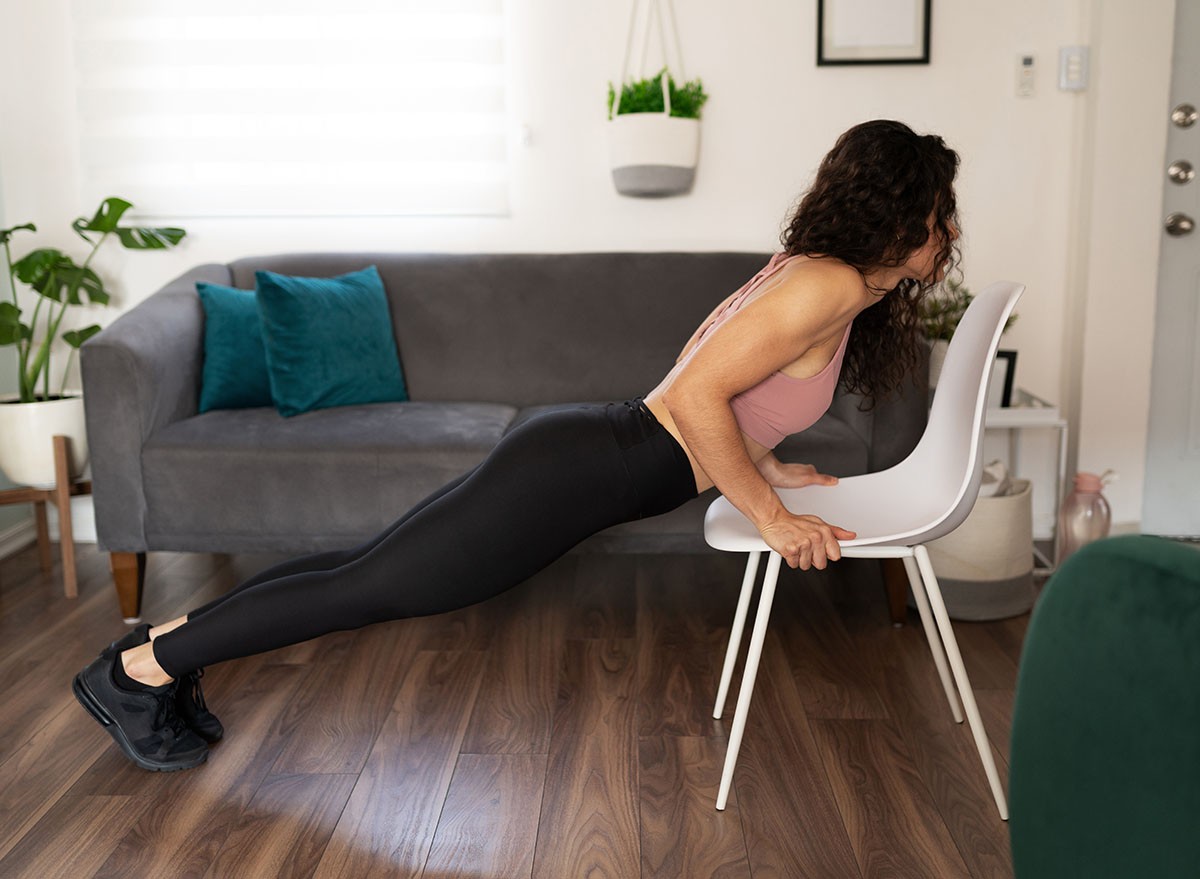
No need to drop to the floor for these pushups. Sit on a sturdy chair with armrests, place your hands on the armrests, and keep your shoulders relaxed. Engage your core, then push yourself up slightly off the seat using your arms. Lower yourself back down slowly and repeat. This move works your triceps and shoulders while giving you a break from sitting.
Try for: 8-12 repetitions, 2-3 sets.
RELATED: I Got My Best Body After 50 and Here's How You Can, Too
Desk Pushups
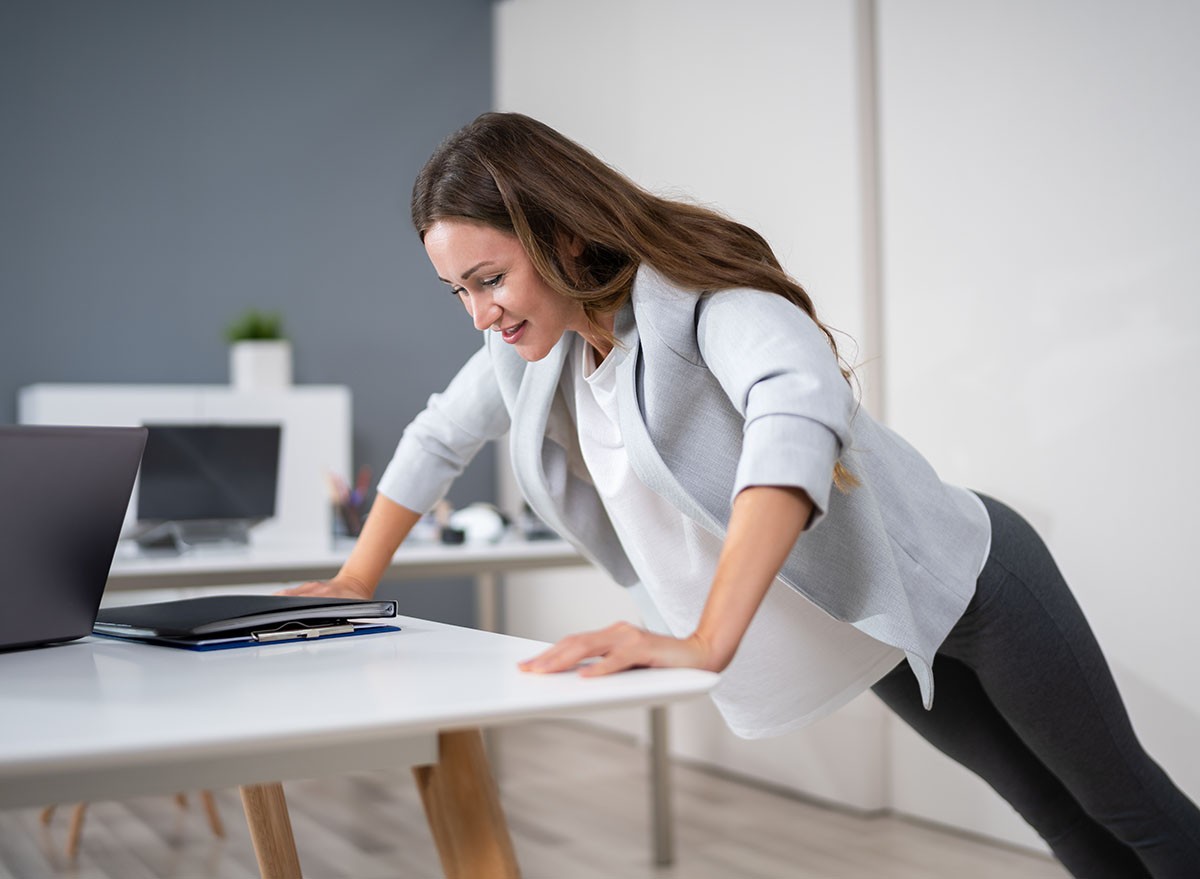
Ready to level up? "Place your hands shoulder-width apart on the edge of your desk. Walk your feet back, shifting your weight onto your toes. Lower your chest toward the desk, then push back up to the starting position," recommends physical therapist and athletic trainer Dr. Eric Moogerfeld, DPT, through Cleveland Clinic. Just make sure your desk is stable enough to support your weight!
Try for: 8-10 repetitions, 2 sets.
Chair Squats
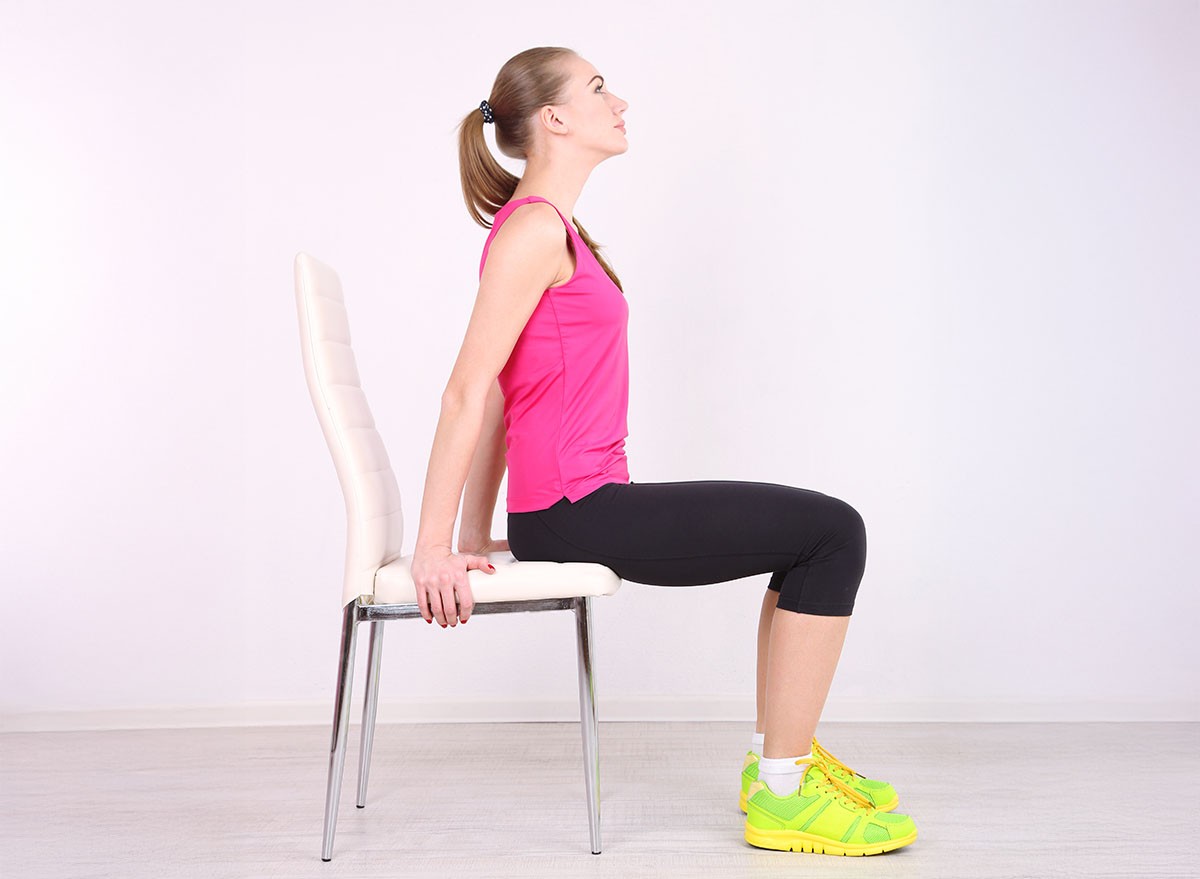
Let's get those legs working! "Sit toward the front of a sturdy chair with your knees bent and feet flat on the floor, shoulder-width apart. Rest your hands lightly on the seat or cross them over your chest. Slowly stand up, using your hands as little as possible. Pause, then slowly sit back down without collapsing into the chair," recommends the CDC's STEADI program.
Try for: 10-12 repetitions, 2 sets.
RELATED: 5-Minute Walking Workouts for Women Over 40 to Burn Fat at Home
Toe Raises
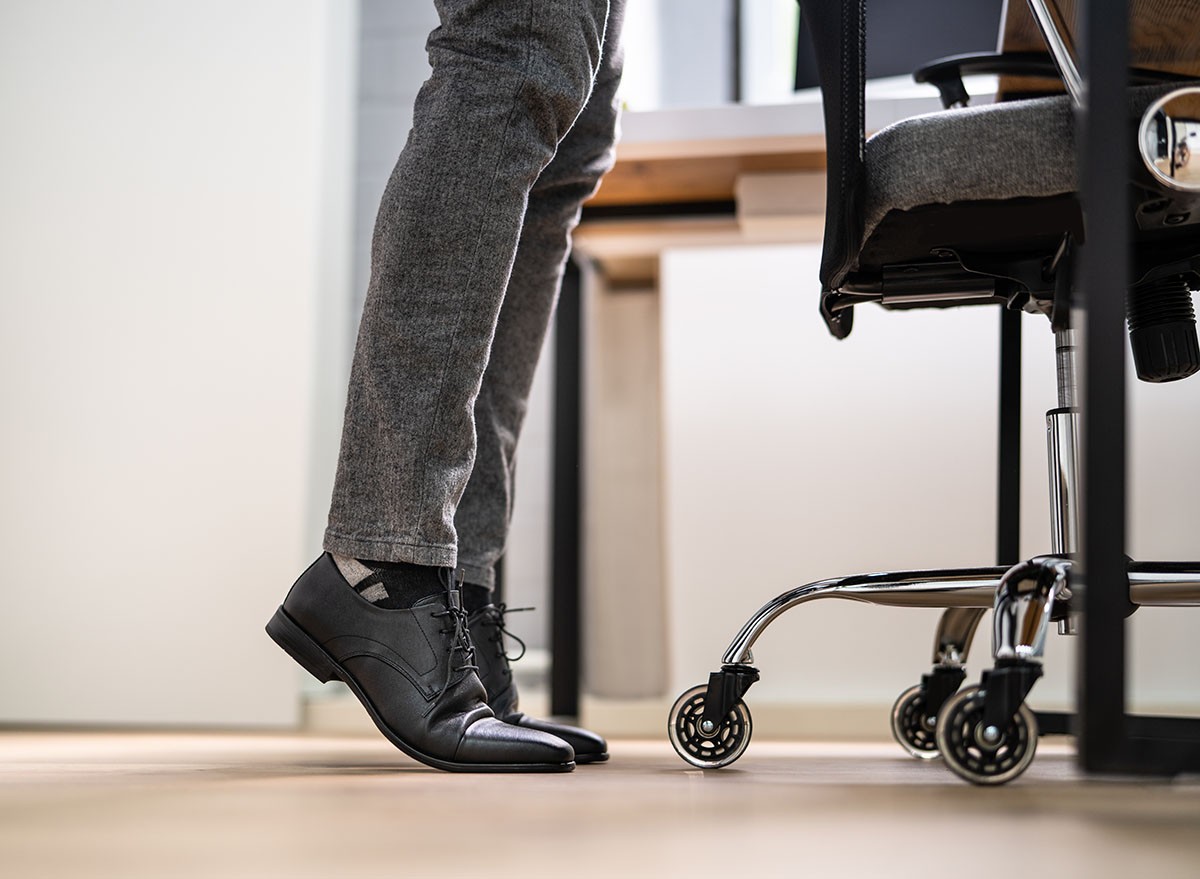
Don't forget about your calves! Cleveland Clinic notes that "your calves help you run, walk, jump, and balance. Calf raises strengthen them." Start by doing these while sitting. As you build strength, try standing behind your chair for support.
Try for: 15-20 repetitions, 2-3 sets.
Sidekicks
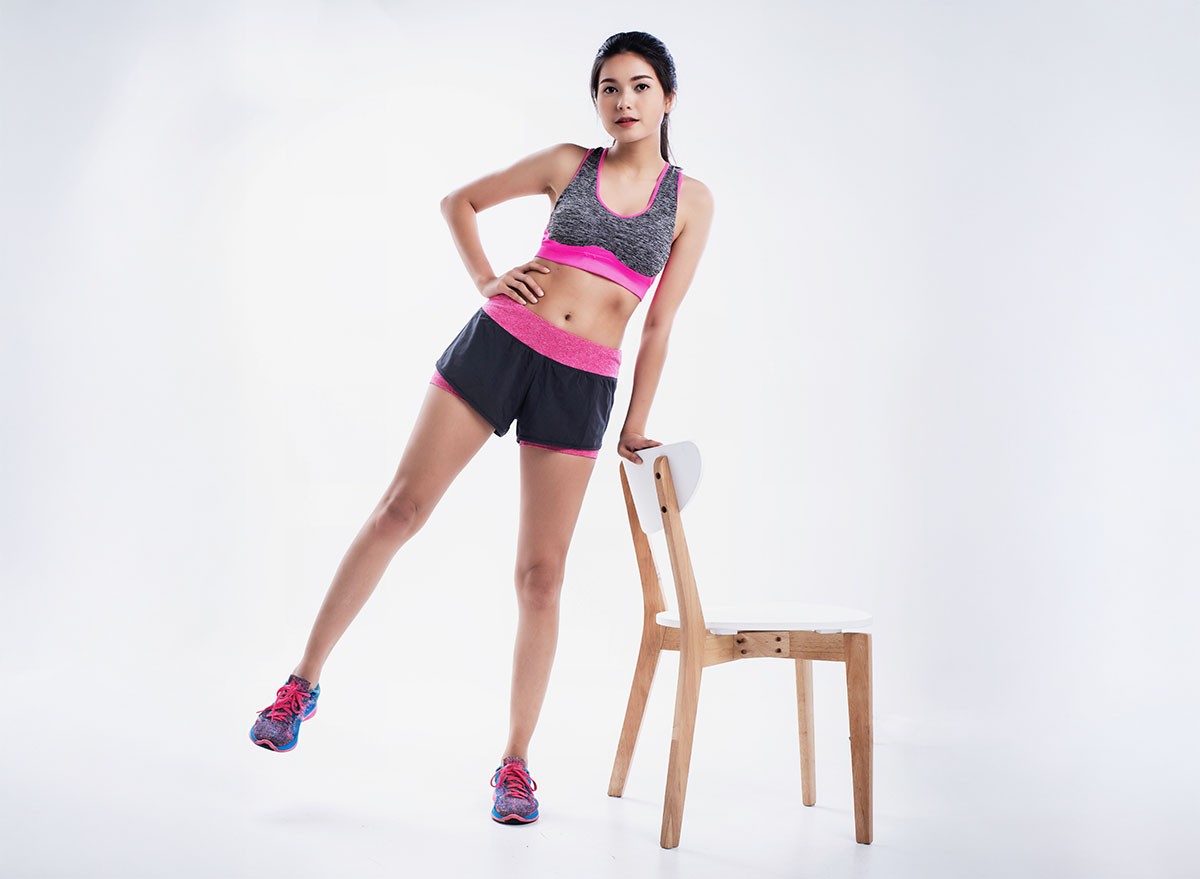
Finally, strengthen those hips! Stand behind your chair for balance, then lift one leg out to the side while keeping your body upright. Keep the movement controlled (no swinging!), then lower it back down slowly. Repeat with the other leg. This exercise improves both strength and balance.
Try for: 8-10 repetitions per side, 2 sets.
Why These Quick Moves Matter
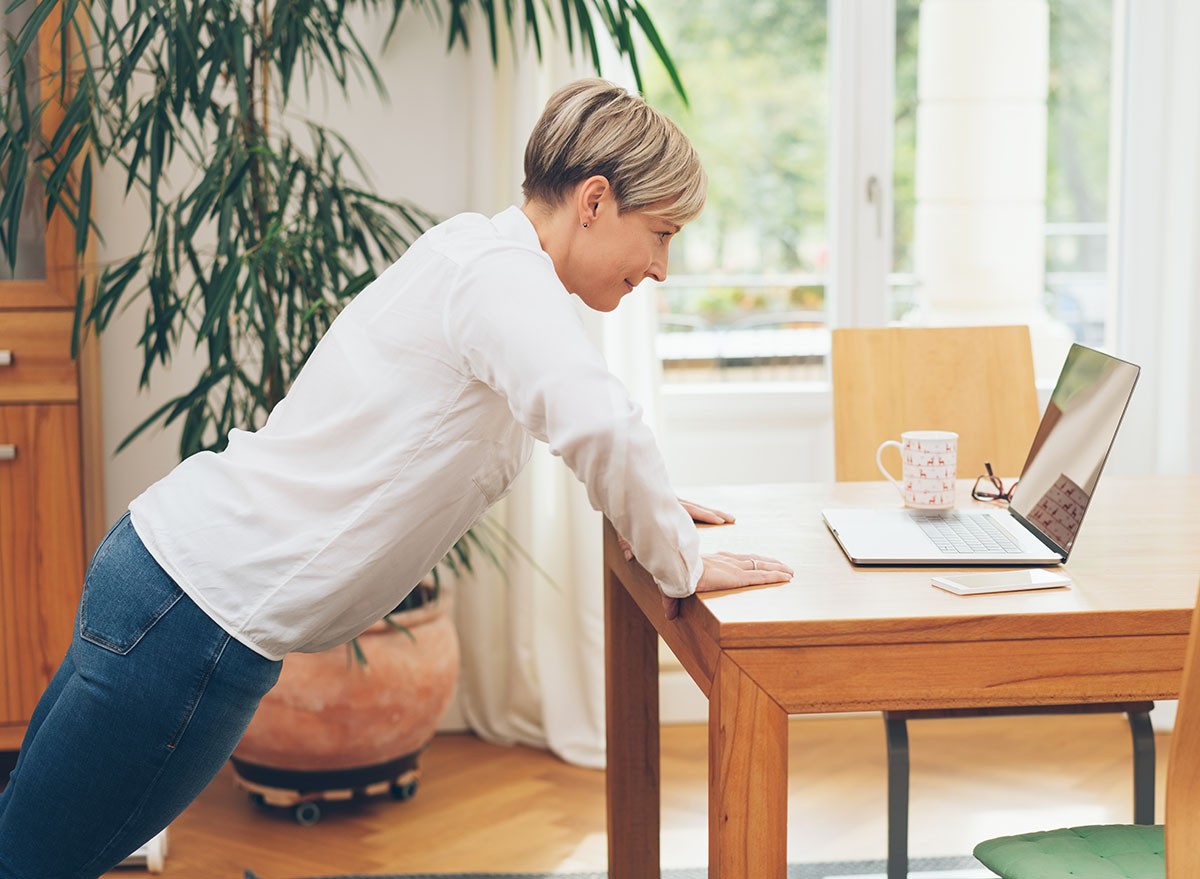
These five-minute exercise breaks add up to big benefits over time. "If you do that four or five times throughout the day, you've really gathered a great deal of resistance training and body weight exercises spread out throughout your day," explains Johnson. "So it makes it a little more doable if you're not able to get to the gym."
RELATED: Tone Sagging Arms in 2 Weeks With These 5 Exercises
The Long-Term Payoff
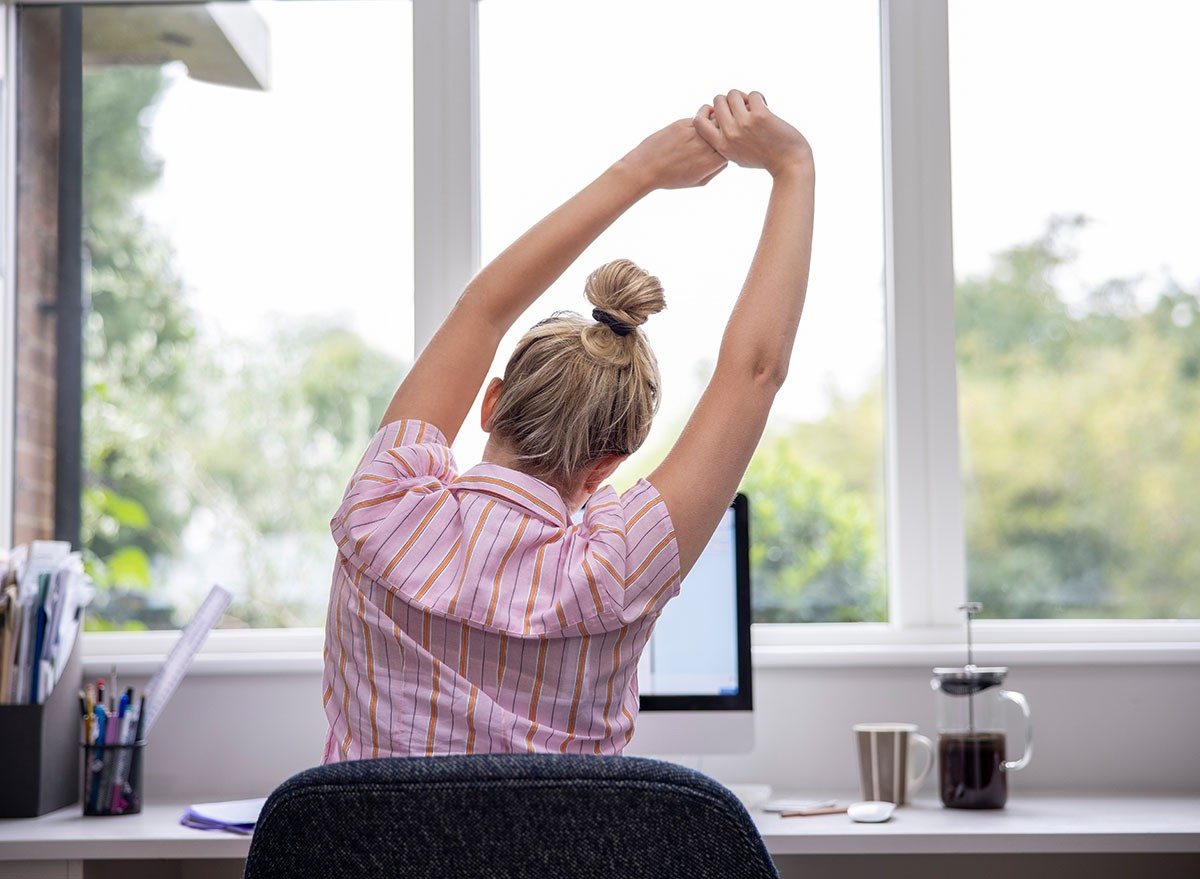
Dr. Nathan LeBrasseur, Director of the Robert and Arlene Kogod Center on Aging at Mayo Clinic, stresses that consistency is key: "Just adding 30 minutes of activity daily can be beneficial. It may have benefits for muscle strength, bone health, or even cognitive health and function." Try setting calendar reminders every 90 minutes as your cue to stand up and move—even the most dedicated workers can spare two minutes for their health.
Small Habits, Big Results

"Many studies show that exercise can mitigate virtually every one of the effects of aging, including loss of lean muscle mass and increased fall risk. These little things really work if done regularly—you're going to reap magical benefits," says professor of physical medicine and rehabilitation Dr. Edward Laskowski. Consider pairing these exercises with other daily habits—like doing chair pushups while waiting for your computer to boot up or toe raises during conference calls—to make them second nature.
So next time you feel that afternoon slump coming on, try a few desk exercises instead of reaching for another coffee. Your body will thank you today, and your future self will thank you even more. And if you enjoyed this article, don't miss 12-3-30 Walking Method: 20 Proven Tips to Lose Weight Faster




